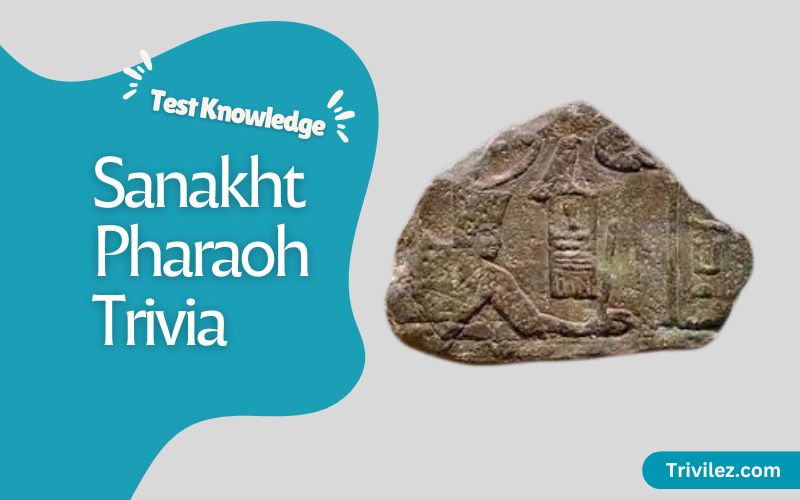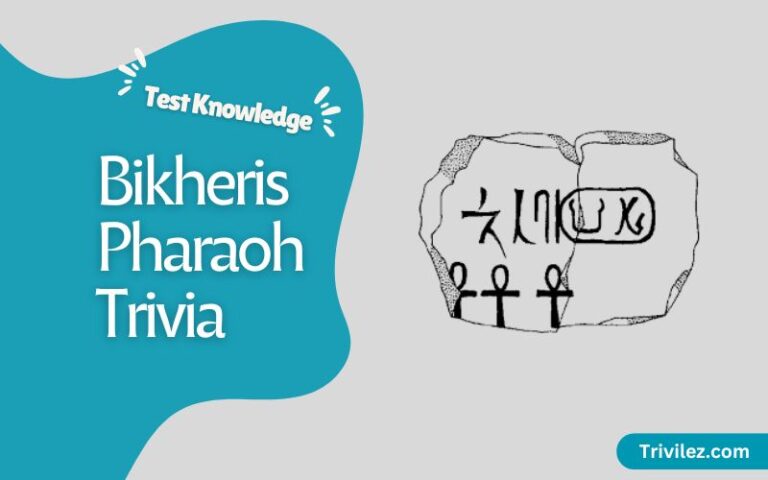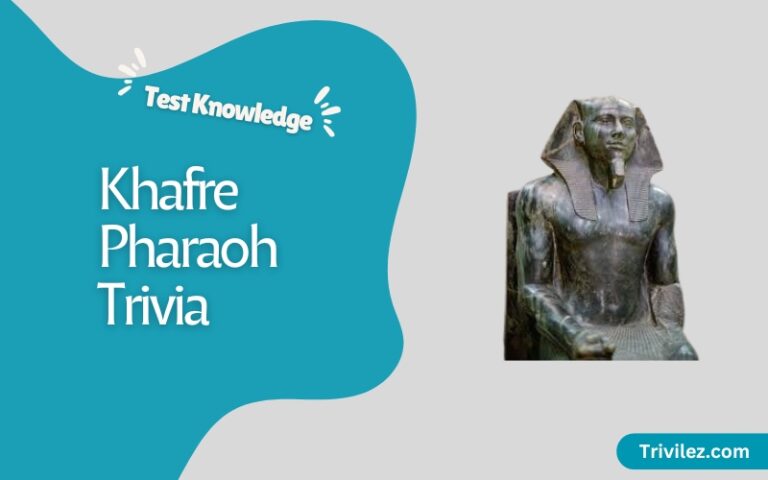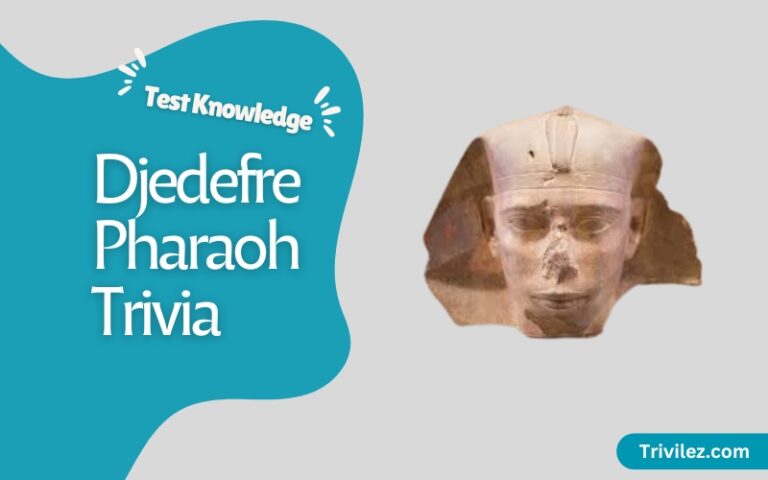Say Hi | contact@trivilez.com
29 Sanakht Pharaoh Trivia Questions and Answers

Sanakht, also known as Nebka, is a mysterious pharaoh of Egypt’s Third Dynasty. Scholars debate whether he was the founder of the dynasty or a later ruler. Unlike his successor Djoser, who built the famous Step Pyramid, Sanakht left behind few monuments.
His name appears in later king lists, but his reign remains a mystery. This Sanakht Pharaoh Trivia Quiz will let you read all about his fascinating life, possible gigantism, and debated historical role!
29 Sanakht Pharaoh Trivia Quiz
Read 30 Sanakht Pharaoh Trivia questions! Explore his reign, debated dynasty position, and possible gigantism in this engaging ancient Egyptian quiz
1. Who was Sanakht?
2. Which dynasty did Sanakht belong to?
3. What is Sanakht’s Horus name?
4. Who is believed to be Sanakht’s successor?
5. What is one of the key debates about Sanakht?
6. What is Sanakht best known for?
7. Where was Sanakht’s possible tomb discovered?
8. Who first identified Sanakht?
9. What is one of the mysteries about Sanakht?
10. How tall was Sanakht according to skeletal remains?
11. What material was used in Sanakht’s tomb construction?
12. What significant structure is attributed to Sanakht?
13. How do we know about Sanakht?
14. What evidence suggests Sanakht’s reign?
15. Did Sanakht leave behind many monuments?
16. Why is Sanakht considered mysterious?
17. What makes Sanakht’s possible skeleton significant?
18. Where was Sanakht’s name found?
19. Is it certain that Sanakht was Djoser’s predecessor?
20. How long did Sanakht rule?
21. What does Sanakht’s Horus name “Nebka” mean?
22. Did Sanakht build a pyramid?
23. What was Sanakht’s relation to Djoser?
24. What kind of artifacts were found in his tomb?
25. How does Sanakht compare to later pharaohs?
26. What list includes Sanakht’s name as a ruler?
27. Why is there uncertainty about Sanakht’s reign?
28. What makes his burial different from later pharaohs?
29. What remains the biggest mystery about Sanakht?
Curious about more legendary Pharaohs? Check out the following Pharaoh trivia blogs for more fascinating facts!
- Narmer Pharaoh Trivia
- Hor-Aha Pharaoh Trivia
- Djer Pharaoh Trivia
- Djet Pharaoh Trivia
- Merneith Trivia
- Den Pharaoh Trivia
- Anedjib Pharaoh Trivia
- Semerkhet Pharaoh Trivia
- Qa’a Pharaoh Trivia
- Hotepsekhemwy Pharaoh Trivia
- Nynetjer Pharaoh Trivia
- Weneg Pharaoh Trivia
- Senedj Pharaoh Trivia
- Khasekhemwy Pharaoh Trivia
- Doser Pharaoh Trivia
- Sekhemkhet Pharaoh Trivia
Fascinating Facts About Sanakht
- Did He Have Gigantism? – Skeletal remains suggest Sanakht was exceptionally tall (6 feet 2 inches), possibly the earliest known case of gigantism in history.
- Founder or Successor? – Some historians believe he was the first king of the Third Dynasty, while others say he ruled after Djoser.
- A Mystery King – Very few inscriptions, statues, or monuments of Sanakht exist, making his reign difficult to verify.
- No Pyramid – Unlike later pharaohs, he does not have a known pyramid or grand tomb.
- The Nebka Name Debate – Some scholars argue that Nebka was actually a different ruler from Sanakht.
- A Possible Brother of Djoser – Some theories suggest he may have been related to Djoser, either as a brother or uncle.
- Buried at Beit Khallaf? – His tomb at Beit Khallaf is still debated as truly belonging to him.
Conclusion
Sanakht remains an enigmatic figure in Egyptian history. Though little is known about his reign, he is considered a possible founder of the Third Dynasty. His potential gigantism adds an unusual twist to his legacy. Unlike his successor Djoser, he left behind few monuments, making it difficult to fully understand his rule.
Through this Sanakht Pharaoh Trivia Quiz, you’ve read fascinating insights into his debated role in Egyptian history. Want to explore more about the pharaohs of the Early Dynastic Period? Read all the Pharaoh Trivia Quizzes and uncover more secrets of ancient Egypt!








